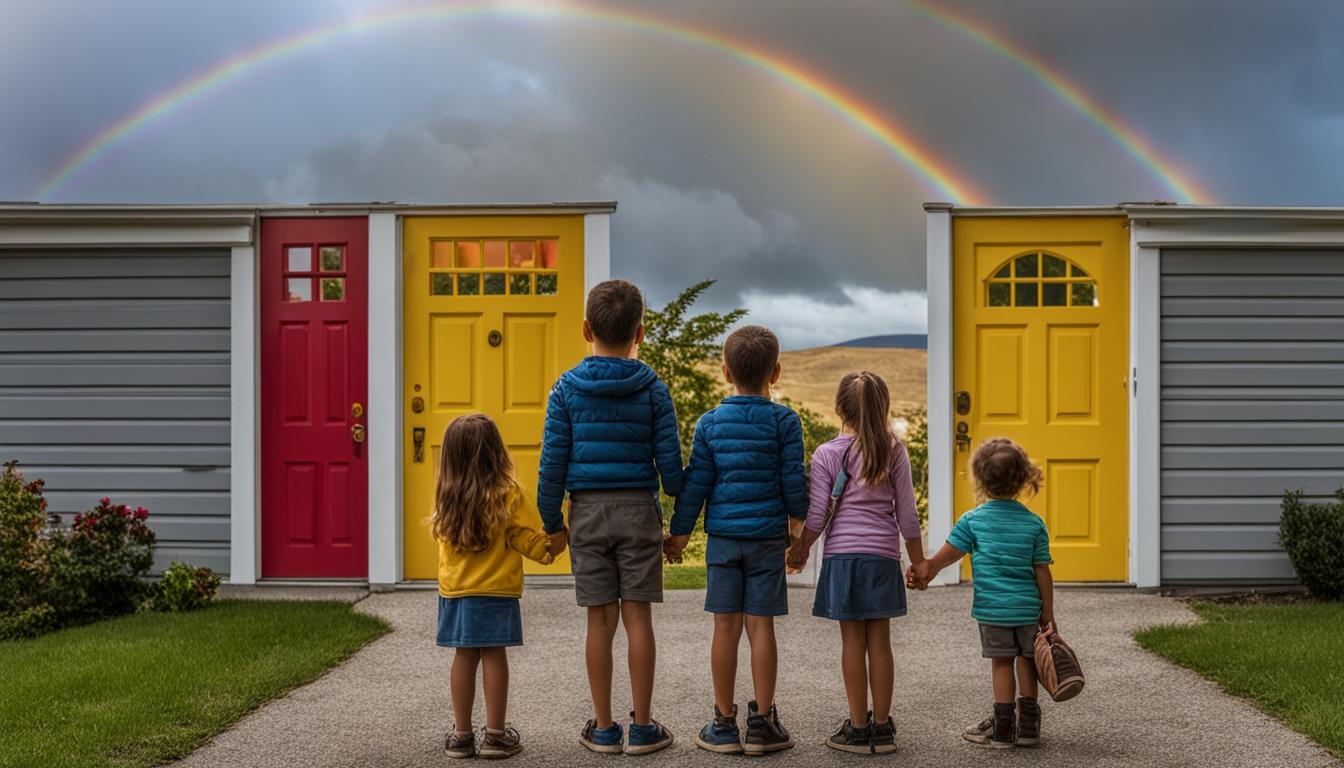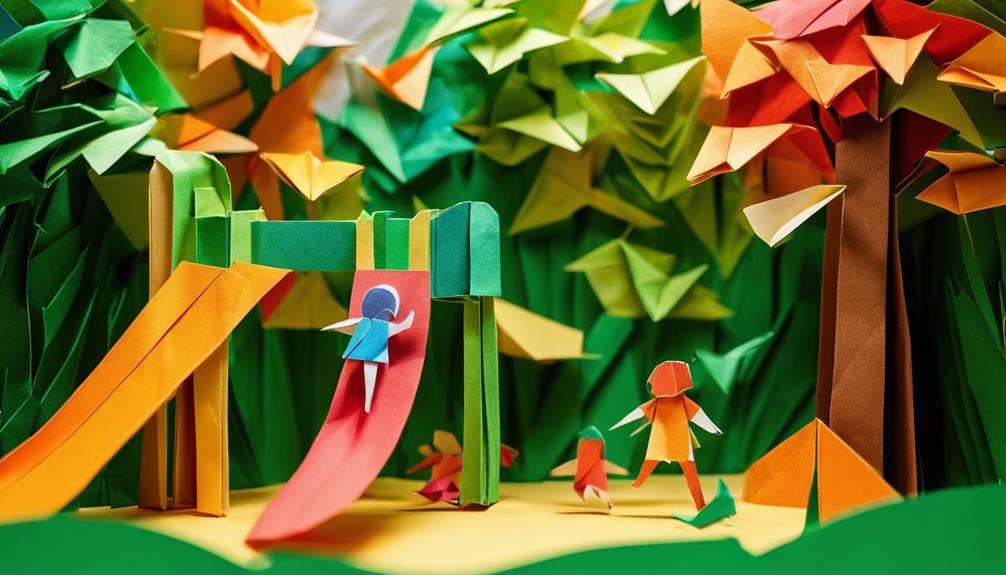Guiding children through the challenging experience of divorce is like navigating a ship through rough waters. As we delve into the intricate nuances of supporting and understanding these young individuals, we encounter various challenges and successes that shape their journey.
Join us as we explore practical strategies, heartfelt insights, and invaluable tools to navigate the emotional landscape of children facing divorce, offering a beacon of hope and resilience in times of uncertainty.
Key Takeaways
- Tailor communication to age for understanding and empathy.
- Address behavioral changes with support and open dialogue.
- Provide stability through routines for security and normalcy.
- Collaborate with parents and professionals for holistic support.
Understanding Children's Emotions
Understanding children's emotions during divorce is essential for providing them with the support and validation they need to navigate this challenging time. Children's emotional responses to divorce can be complex, influenced by factors such as their age, personality, and coping mechanisms. Younger children may struggle with a sense of loss and fear of abandonment, while older children might experience worry about the future and the changing family dynamics. It's crucial to recognize that each child may react differently to divorce based on their unique emotional makeup.
During this tumultuous period, children may exhibit a range of behaviors as they try to make sense of the changes happening around them. Some children may act out with aggression, others may withdraw into themselves, and some might regress to earlier developmental stages. These behaviors are often outward manifestations of the internal emotional turmoil they're experiencing. By acknowledging and empathizing with children's emotions, we can help them feel heard and supported as they navigate the complexities of divorce.
Effective Communication Strategies

Navigating effective communication strategies when working with children of divorce is key to fostering understanding and support during this challenging time. It's essential to plan how to disclose the separation or divorce to children together, choosing a suitable time and place for the conversation. Tailoring the information based on children's ages ensures they grasp the situation, and encouraging open communication about feelings can facilitate a healthy dialogue. Reassuring children of continued love and care is vital for their emotional well-being during this transition period. Even though it may be difficult, parents must prioritize effective communication to support their child's mental health and overall well-being. Below is a table summarizing key points to consider when communicating with children of divorce:
| Communication Strategies | Importance | Tips |
|---|---|---|
| Plan together | Ensures unified message | Collaboration is key |
| Choose right time and place | Sets the tone for discussion | Pick a quiet, comfortable setting |
| Tailor information | Enhances understanding based on age | Use age-appropriate language |
| Encourage open dialogue | Facilitates emotional expression | Listen actively and without judgment |
| Reassure love and care | Supports emotional well-being during transition | Express affection and availability |
Addressing Behavioral Changes
How can we address the behavioral changes exhibited by children of divorce?
It's essential to understand that children feel a wide range of emotions during this time, which can manifest in behavioral changes. Signs of anxiety, such as acting out or withdrawal, are common reactions to the stress of divorce. Kids may struggle with expressing their feelings verbally, leading to behavioral issues as an outlet.
It's normal for kids to seek more attention from parents or exhibit difficulty concentrating as they navigate this challenging time. Creating a supportive environment where children feel heard and understood is crucial. Encouraging open communication and providing a safe space for them to express their emotions can help manage these behavioral changes.
Support groups or therapy can also be beneficial for children of divorce, allowing them to connect with peers facing similar challenges. Additionally, maintaining a positive relationship with both parents and ensuring consistency in parenting styles can promote stability and help alleviate behavioral issues. Remember, addressing the behavioral changes in children during divorce is vital for the overall health of children.
Providing Stability and Routine

Establishing consistent routines and communicating clear expectations is essential for providing stability and security for children during divorce. Children thrive on predictability, especially during times of upheaval, and creating a structured environment can help them feel safe and secure.
Here are three ways to help your kids cope with the changes:
- Maintain Consistent Rules: Keeping rules and discipline consistent across both households can offer a sense of security for kids, as they know what to expect in different environments.
- Provide Predictable Routines: Predictable routines help ease children's minds and provide a sense of normalcy amidst the changes brought on by divorce.
- Avoid Spoiling: While it may be tempting to overindulge children during divorce, focusing on providing a stable and structured environment rather than showering them with gifts or privileges is more beneficial in the long run.
Collaborating With Parents and Professionals
Collaborating with parents and professionals is essential for creating a unified and effective support system for children of divorce. Open communication between all parties involved is crucial in understanding and meeting the child's needs. By working together and coordinating efforts, we can ensure a holistic approach that provides the best possible support for the child. Involving professionals such as therapists or counselors can bring additional expertise and professional guidance to the table. This team collaboration allows for a more comprehensive understanding of the child's situation and enables us to tailor interventions accordingly. It's important to approach the support of children of divorce with a unified front, ensuring that everyone involved is on the same page and working towards the common goal of helping the child navigate this challenging time. Together, we can provide the effective support and care these children need during this period of transition.
| Open Communication | Unified Approach | Coordinating Efforts |
|---|---|---|
| Understanding each other's perspectives | Working towards a common goal | Ensuring everyone is informed |
Frequently Asked Questions
What Is Most Important in Helping Children Cope With Divorce?
Supporting children through divorce requires validating emotions, maintaining routines, open communication, and avoiding conflict. Encouraging expression of feelings and seeking professional help when needed are vital. We prioritize creating a secure, nurturing environment for coping.
What Type of Therapy Is Best for Children Going Through Divorce?
For children going through divorce, therapy options like play therapy, CBT, family therapy, art therapy, and group therapy can provide support, help express emotions, challenge negative thoughts, improve communication, and foster connection with peers.
What's the Hardest Age for Children to See Their Parents Split?
We find that the hardest age for children to witness their parents' separation is typically between 9-12. During this stage, kids are more aware of family dynamics, leading to struggles with loyalty conflicts and increased anxiety.
How Do I Help My Child Understand Divorce?
We help our child understand divorce by explaining it gently, reassuring them it's not their fault, encouraging them to share feelings, keeping routines stable, and using resources like books and therapy. Together, we navigate this challenging time with love and support.
Conclusion
As we navigate the complexities of divorce with children, it's crucial to remember that they may experience a wide range of emotions.
Did you know that 25% of children from divorced families experience ongoing emotional and behavioral issues?
By providing support, stability, and open communication, we can help children navigate this difficult time with resilience and understanding.
Let's continue to prioritize their well-being and provide the care and support they need to thrive.










